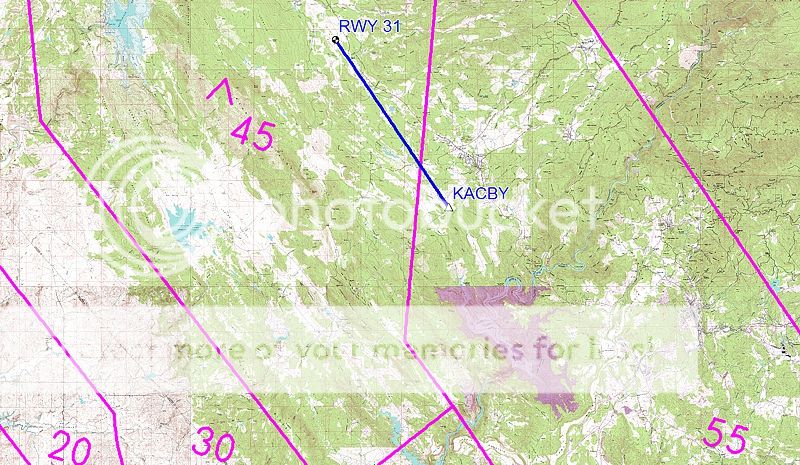skidoo
Line Up and Wait
This thread had some good info.
http://www.pilotsofamerica.com/forum/showthread.php?t=60751&highlight=straight+circling
But, I have a question regarding the following scenario.
Say you are flying IFR in VFR conditions into KCPU
http://www.airnav.com/airport/KCPU
You are on a course that takes you almost straight in for runway 31. ATC is ready to clear you for the visual approach, but you see a bunch of thick smoke ahead and don't know for sure if it is VFR all the way in there. So, you choose to follow the only approach available, the GPS RWY 31 approach. ATC then asks you if you plan a straight in or course reversal. You would like to go straight in. You are descending to 5500 ft and getting close to the IAF/FAF. ATC says 5500 ft is a low as he can get you, clears you for straight-in, cross KACBY at or above 5500 ft, frequency change approved. You read back the clearance, change frequency and then quickly reach the IAF/FAF a few hundred feet above 5500. From this point, you can see the field and well beyond because the smoke has thinned.
What do you do:
1) Do the course reversal because you are too high.
2) Continue down as quickly as you can because you were cleared straight-in, and circle to land if necessary.
3) Continue down as quickly as you can because you were cleared straight-in, and go missed if you can not land straight-in.
4) You would have said unable when given that clearance.
5) Other - Discuss.
Also, I'm looking for discussion as to what is legal, appropriate, safe, practical, and proper. I'm thinking that a straight in clearance allows you to not do the course reversal but you would have the option to circle or land straight-in when you see the field. Educate me as to the proper procedure.
http://www.pilotsofamerica.com/forum/showthread.php?t=60751&highlight=straight+circling
But, I have a question regarding the following scenario.
Say you are flying IFR in VFR conditions into KCPU
http://www.airnav.com/airport/KCPU
You are on a course that takes you almost straight in for runway 31. ATC is ready to clear you for the visual approach, but you see a bunch of thick smoke ahead and don't know for sure if it is VFR all the way in there. So, you choose to follow the only approach available, the GPS RWY 31 approach. ATC then asks you if you plan a straight in or course reversal. You would like to go straight in. You are descending to 5500 ft and getting close to the IAF/FAF. ATC says 5500 ft is a low as he can get you, clears you for straight-in, cross KACBY at or above 5500 ft, frequency change approved. You read back the clearance, change frequency and then quickly reach the IAF/FAF a few hundred feet above 5500. From this point, you can see the field and well beyond because the smoke has thinned.
What do you do:
1) Do the course reversal because you are too high.
2) Continue down as quickly as you can because you were cleared straight-in, and circle to land if necessary.
3) Continue down as quickly as you can because you were cleared straight-in, and go missed if you can not land straight-in.
4) You would have said unable when given that clearance.
5) Other - Discuss.
Also, I'm looking for discussion as to what is legal, appropriate, safe, practical, and proper. I'm thinking that a straight in clearance allows you to not do the course reversal but you would have the option to circle or land straight-in when you see the field. Educate me as to the proper procedure.

